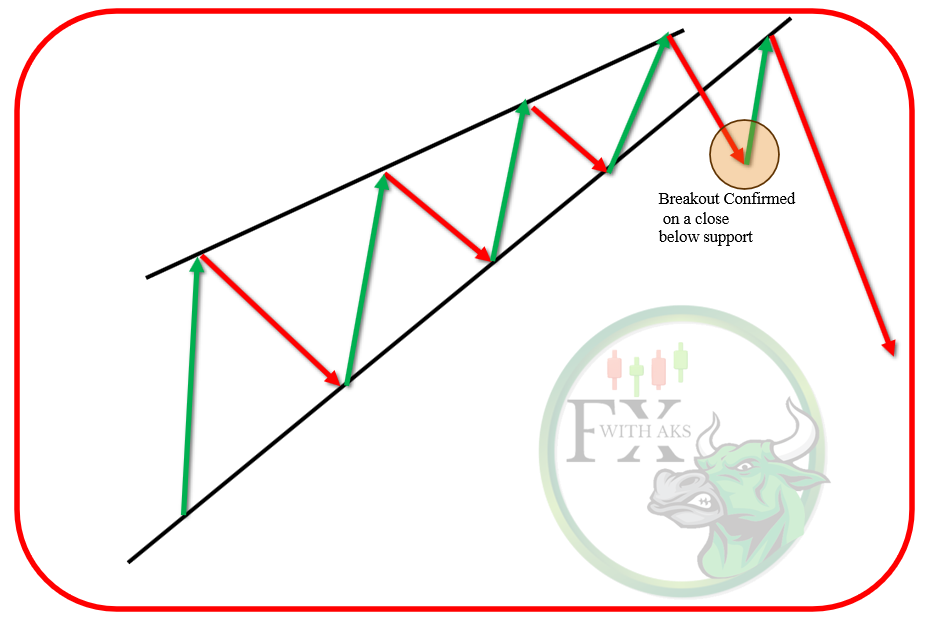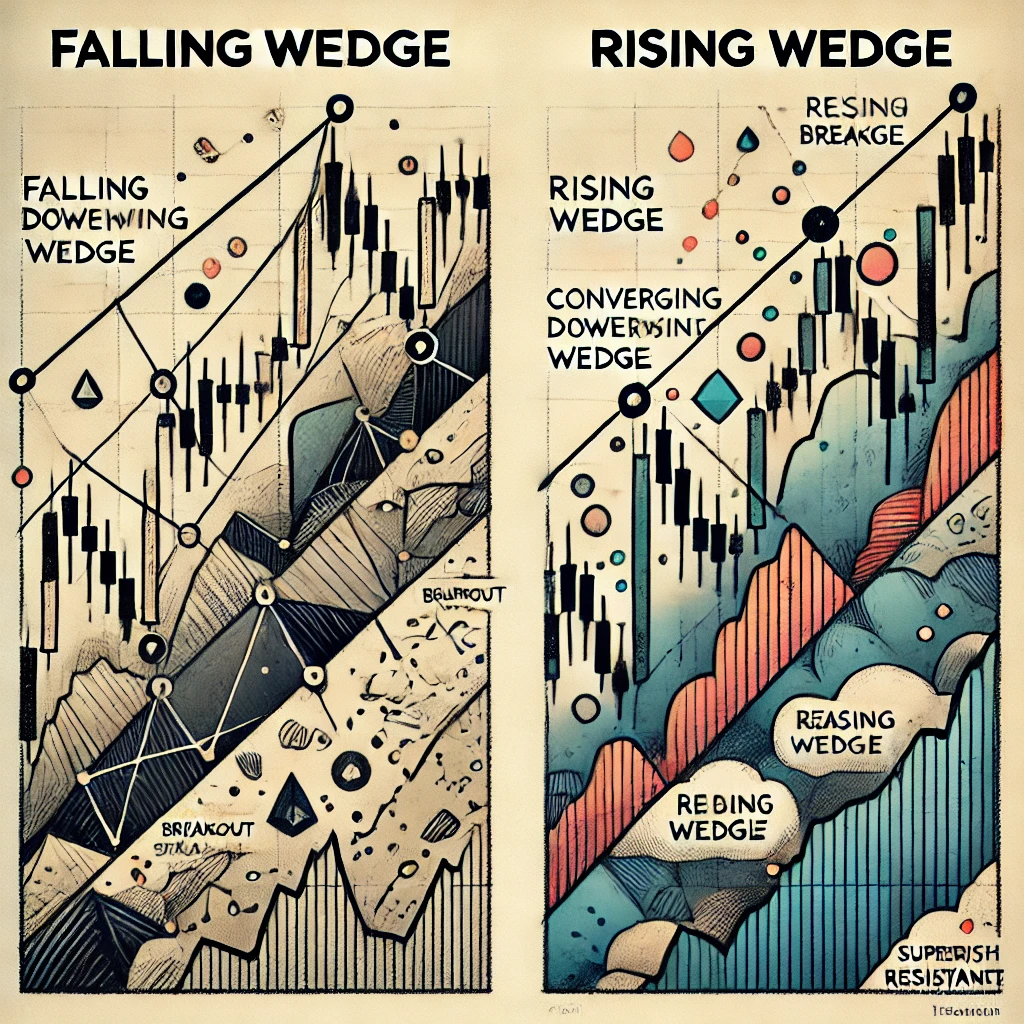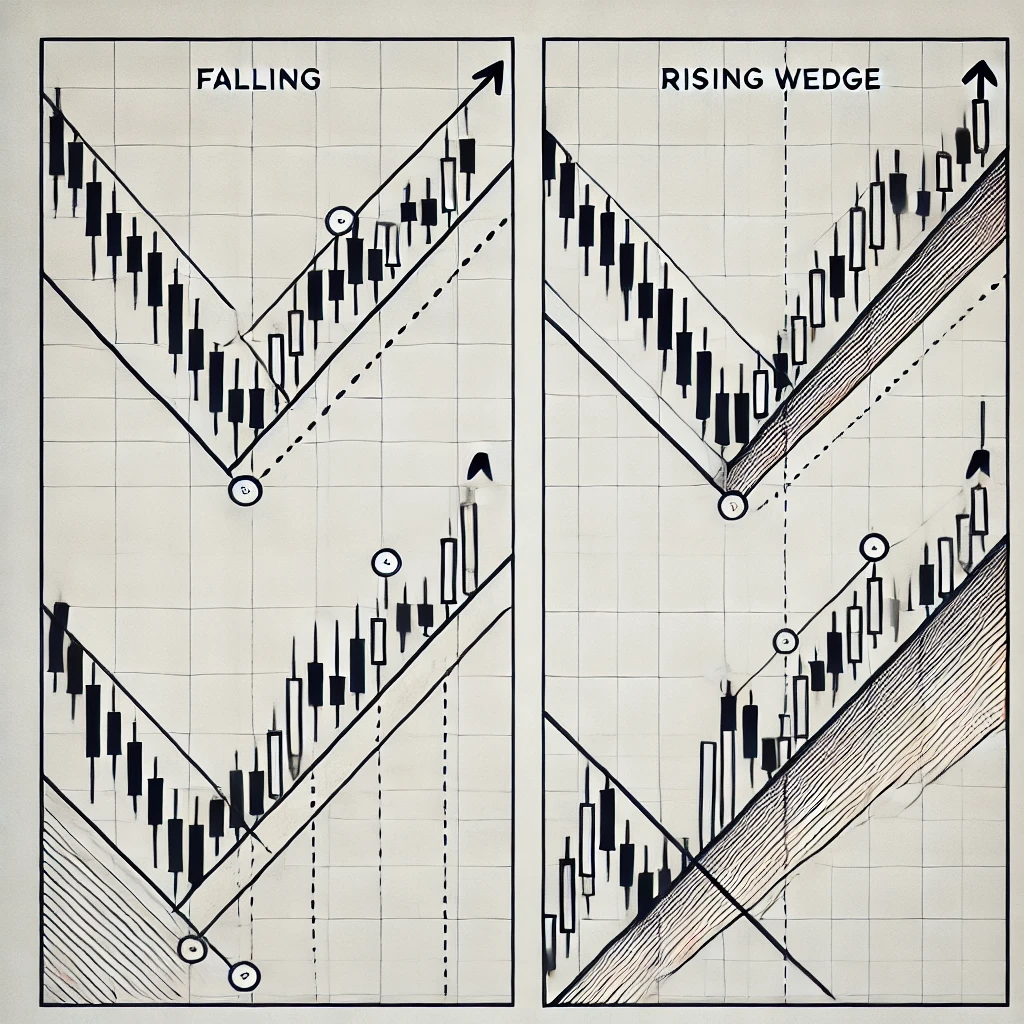Falling Wedge
A falling wedge is a bullish chart pattern that signals a potential reversal or continuation of an uptrend.
It forms when price action consolidates between two downward-sloping trend lines that converge over time. Here’s how it works:

Key Characteristics
- Downward Sloping: Both resistance (upper) and support (lower) trendlines slope downward, with the upper line being steeper.
- Converging Lines: The price range narrows as it moves toward the apex of the wedge.
- Volume Decline: Trading volume generally decreases as the pattern develops.
- Breakout Direction: Typically, the price breaks out upward, signaling a bullish move.
Types of Falling Wedges
- Reversal Pattern: Appears after a downtrend and signals a potential trend reversal upward.
- Continuation Pattern: Occurs within an uptrend, indicating a temporary pullback before the price resumes rising.
How to Trade It
- Entry Point: Buy when price breaks above the resistance line with high volume.
- Stop-Loss: Place below the recent
Rising Wedge
A rising wedge is a bearish chart pattern that signals a potential reversal or continuation of a downtrend. It forms when price action consolidates between two upward-sloping trendlines that converge over time.

Key Characteristics
- Upward Sloping: Both resistance (upper) and support (lower) trendlines slope upward, with the lower trendline being steeper.
- Converging Lines: The price range narrows as it moves toward the apex of the wedge.
- Volume Decline: Trading volume generally decreases as the pattern develops.
- Breakout Direction: Typically, the price breaks out downward, signaling a bearish move.
Types of Rising Wedges
- Reversal Pattern: Appears after an uptrend and signals a potential trend reversal downward.
- Continuation Pattern: Occurs within a downtrend, indicating a temporary pullback before the price resumes falling.
How to Trade It
- Entry: Enter a short position when the price breaks below the lower trendline.
- Stop-Loss: Place a stop-loss just above the recent swing high.
- Target: Measure the height of the wedge at its widest point and project it downward from the breakout.
Would you like a comparison between the falling wedge and rising wedge for better clarity? 🚀
Difference Between Falling Wedge & Rising Wedge
Here’s an image illustrating the Falling Wedge (bullish) and Rising Wedge (bearish) patterns:
Falling Wedge (Bullish)
- Price consolidates within two downward-sloping, converging trendlines.
- Typically breaks out upward with increased volume.
Rising Wedge (Bearish)
- Price consolidates within two upward-sloping, converging trendlines.
- Typically breaks out downward with increased volume.
Generating the image now… 🎨📈


